Beneath a veil of violence: The inspiring life and haunting death of Emma Bates
The image of the white sheet draped over Emma Bates’ body will forever be etched in her sister Cassandra Searle’s mind. A small opening revealed her sister at peace, but it also concealed the violence she endured before her death.
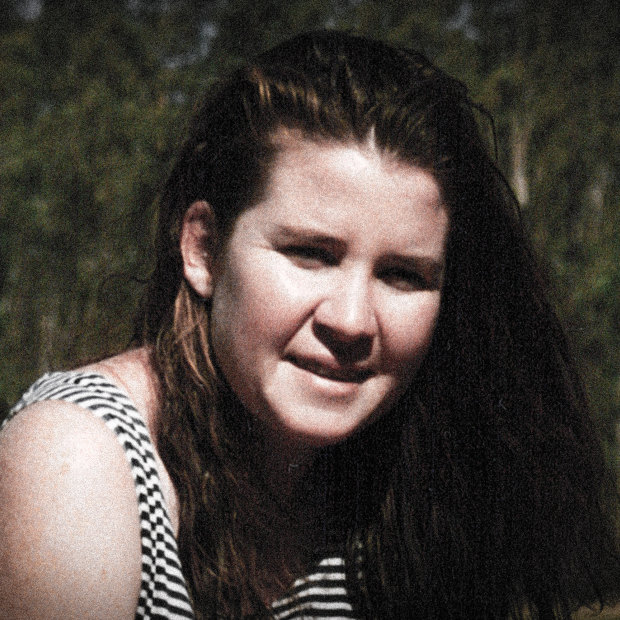
In the days after Emma’s death, hundreds of locals took to the streets.
Just as the ink on her skin told the story of Emma Bates’ life, the bruises on her body told the story of her death.
For Bates’ older sister, Cassandra Searle, her abiding memory of when she lost Emma was seeing her laid out on a gurney in the mortuary. Emma had been covered in a white sheet, which had been carefully folded back around her head to reveal a small patch of skin on the side of her face.
She looked peaceful and almost angelic.
Searle and two of her sisters were standing in the Victorian coronial services building in Southbank after being called to formally identify their beloved sibling.
“It was quite beautiful the way they did it,” she says. “They wanted to protect us and preserve our memories of her, so they protected us from the worst of her injuries.”
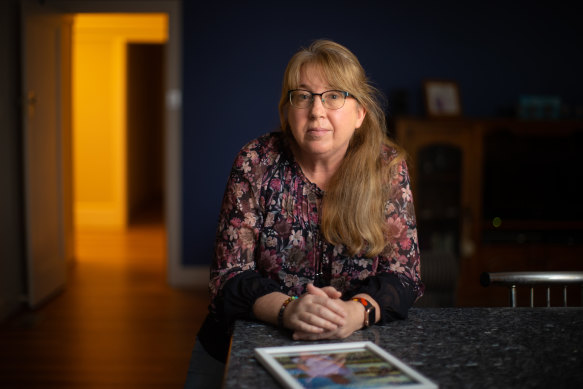
Cassandra Searle is searching for answers after her sister Emma Bates died. Credit: Simon Schluter
Emma, who was a type 1 diabetic, was found dead in her bedroom inside her home in Cobram – 220 kilometres north of Melbourne, near the NSW-Victoria border – on April 23. She was discovered by police who broke in through a back window to do a welfare check. She had head and upper body injuries consistent with being violently assaulted.
Her family believe the 49-year-old may have been lying there for days, after last being seen in the main street of Cobram, with bruises on her face, the weekend before she died.
The image of the white sheet will be forever etched in Searle’s mind. It covered a sea of treasured tattoos her sister had collected, piece by piece, over a lifetime. They included a dinosaur, an elephant, an owl, and a cat, to mention a mere few. She had a tattoo of a syringe, too, to let people know she was a diabetic.
But most precious to Emma were the faces and names of her 17 nieces and nephews, tattooed across her legs so she could carry them with her always.
What happened to her in her final days, and the violence she endured, are among the many unanswered questions her loved ones have been left with since her death.
“In a sense her body being covered by the sheet made us think the worst too,” says Searle. “Because it was like, well, what aren’t they showing us?”
Emma always saw the good in people. Her kindheartedness and tendency to give people a second chance was a quality that those who loved her treasured most about her.
But it is also what her family ultimately believe led her to befriend her neighbour John Torney, allowing him to move into her home, when he was looking for a place to stay, in the weeks before she died.

John Torney has been charged with a series of assault-related offences related to Emma’s death.Credit: Sunraysia Daily
Torney – who was found not guilty of the murder of two-year-old Nikki Francis Coslovich in Mildura in 2015 – has been charged with a series of assault-related offences in connection with Emma’s death. In court in Shepparton last week, the 39-year-old indicated for a second time that he would fight the charges.
Bates’ grieving family were told Torney would not be charged with murder or manslaughter after an autopsy could not find a conclusive cause of her death.
Her death certificate states: diabetic ketoacidosis in a diabetic woman with a head injury. Diabetic ketoacidosis is a serious complication of diabetes during which the body produces excess blood acids. It occurs when there is not enough insulin in the body.
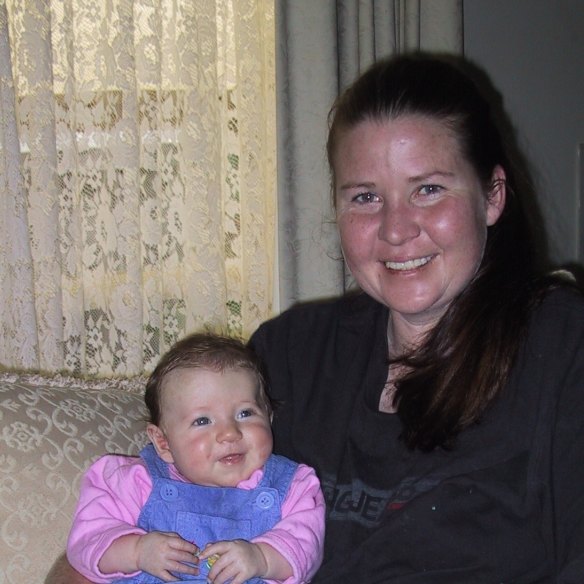
Emma Bates holds her young niece.
Searle says Emma’s phone had a sensor, allowing her to monitor her glucose levels and manage her diabetes.
“We’ve learned at some point in the days before she died her phone has been broken,” Searle says. “It was her lifeline, and it was gone.”
In Cobram – a small country town surrounded by towering red gums, vast fruit orchards, farmland and the Murray River – where Emma was born and died, her death has stirred up sorrow and anger.
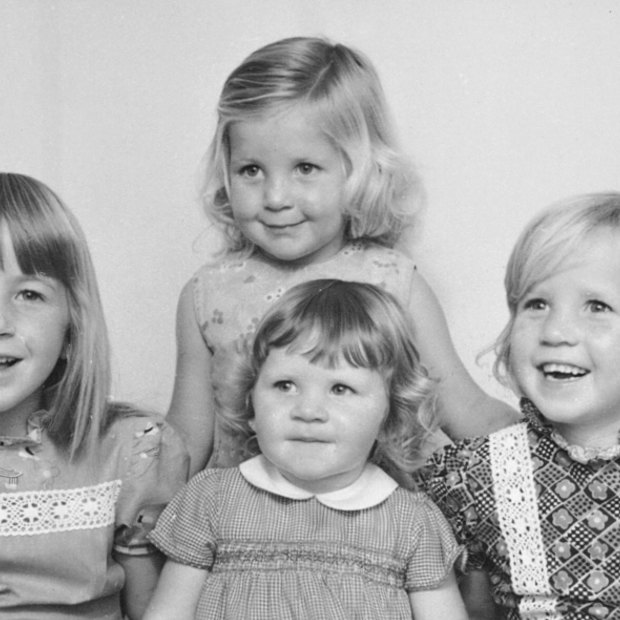
Emma Bates (bottom middle) as a child with her siblings,
With a population of just over 6000 people, it would be difficult to find a local who had not heard about Emma Bates. Her dad, Graeme, still gets hugs in the supermarket from those who knew his daughter.
In the days after Emma’s death, hundreds of locals took to the streets in a display of collective grief, demanding greater action on the growing epidemic of women killed in violent attacks across Australia.
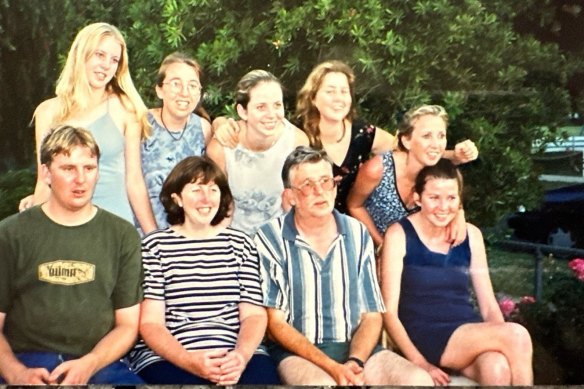
Emma Bates in the front row, far right, pictured with her siblings and parents.
Searle, a specialist education teacher, said her life tilted on its axis when her father called her while she was driving home from work one afternoon. His voice cracked with emotion as he told her to stop driving, before he broke the news.
“I was bawling my eyes out,” she says.
“People talk about their hearts being broken. But from the moment I heard my dad’s voice breaking on the phone, mine has been shattered.”
Searle and her sisters Rachel and Jess have attended every court hearing since Emma’s death.
“We want to be her voice,” says Searle. “To make sure someone is always there, standing up for Emma.”
Life was rarely easy for Emma, the middle child of seven. She was left with permanent damage to her organs after being rushed to hospital when her appendix burst at 18 months old. Unable to have her own children, Emma poured all her love into her family, especially her nieces and nephews, who she loved to spoil. They were the pride and joy of her life.
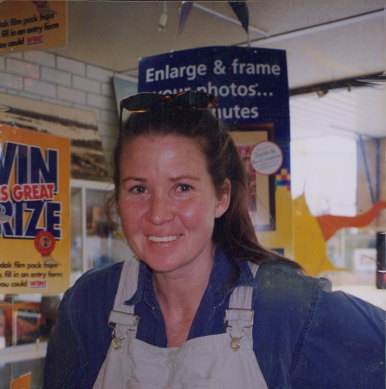
Emma Bates.
Emma had been chronically ill with diabetes since her 20s. She was regularly hospitalised and the disease rendered her unable to work. She required a mobility scooter and walking cane to get around.
But despite her health troubles, Searle says Emma was the most empathetic person she knew – generous, eccentric, a carer to their parents, and always curious about others. She loved to tell stories, had a rebellious streak, was a mad Demons supporter, and was crazy about cats. She adopted countless rescue cats over the years. Tiny feline statues, figurines and pictures of cats also filled every shelf and wall of her home.
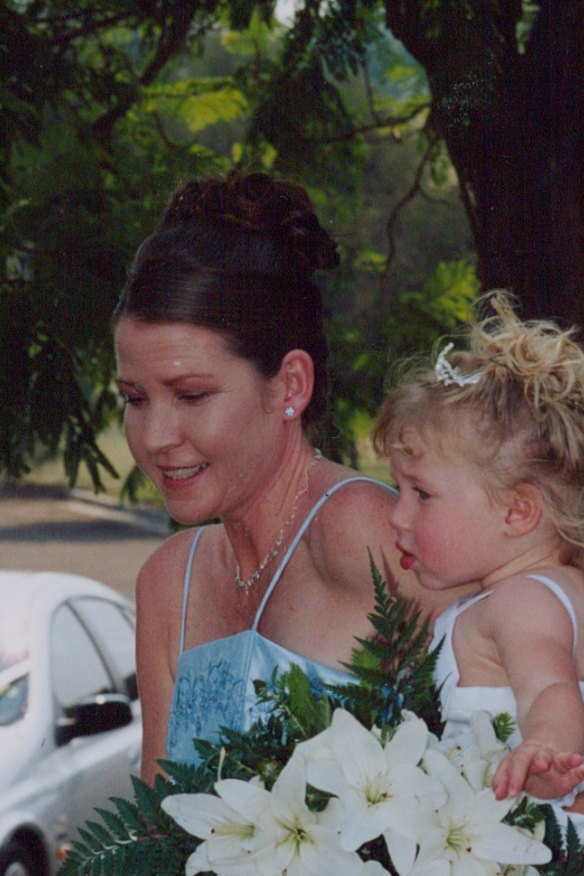
Emma Bates as a bridesmaid, pictured with her niece.
“She has the biggest heart of anyone and was always helping someone,” Searle says.
“But she could also be fiery if you got on the wrong side of her, and you would have to work hard to get back onto her good side.”
Ray Findlay was Emma’s next-door neighbour for more than 26 years.
“We never lived in each other’s pockets,” he says. “But we always had a yarn over the fence.”
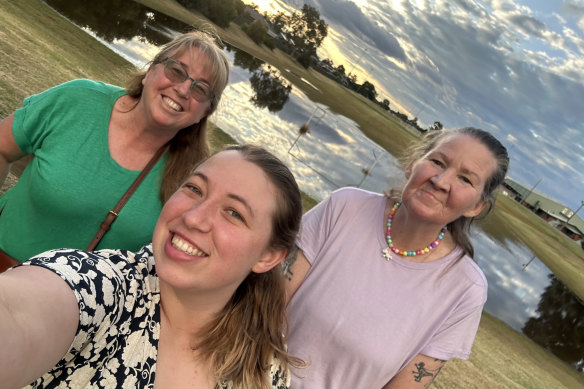
Cassandra Seale pictured with her daughter Nat and Emma on Christmas day last year.
Findlay’s wife Loris had Alzheimer’s and Emma would often come and visit, sitting and talking with her for hours. When Loris became too ill and moved into a nursing home, and later died, Emma still visited their daughter Helen. Like Emma, Helen had diabetes and she loved cats.
“She was very good for Helen,” Findlay says. “They had a lot in common. She was a very caring person. Life was hard for Emma with her health troubles, but she always made time for people.”
The father of three still remembers Emma coming over one day and asking if she could marry her partner, Wayne, in his garden. Findlay, Loris and Helen all attended the wedding on the front lawn with Emma’s family. Helen signed the wedding certificate as the witness.
It is a strange kind of grief to live so close to somebody for so many years, then suddenly, they are gone.
Findlay and Helen are still coming to terms with Emma’s death.
“We didn’t hear a sound or see a thing until the police came that day,” he says.
The 85-year-old still can’t bring himself to read the news or watch the media coverage of her death.
“It is too raw. It has knocked us around a lot,” he says, his eyes filling with tears. “It’s just too close to home. We miss her.”
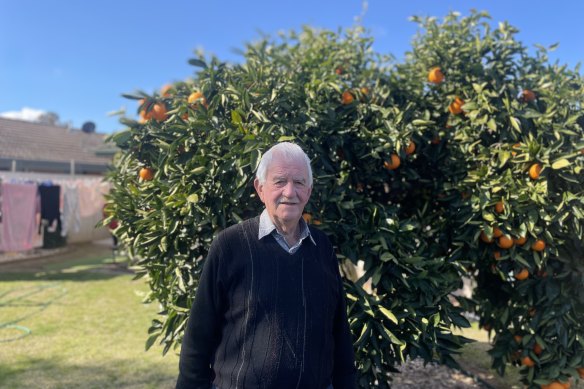
Ray Findlay, Emma’s next-door neighbour for more than 26 years, has been left devastated by her death.
Since Emma’s death, Searle has been left trying to piece together the final days of her sister’s life.
What is known is that Torney moved into Emma’s house in the weeks before she died, shortly after she had separated briefly from her long-term partner, Wayne.
Torney’s clothing and belongings were found strewn across Emma’s living room, where her family believed he had been sleeping.
Emma’s home, which was usually cluttered and cosy, was left in disarray, her family says.
Searle says her bedroom door was hanging off the hinges, and she saw holes in the walls, a TV and crockery had also been smashed.
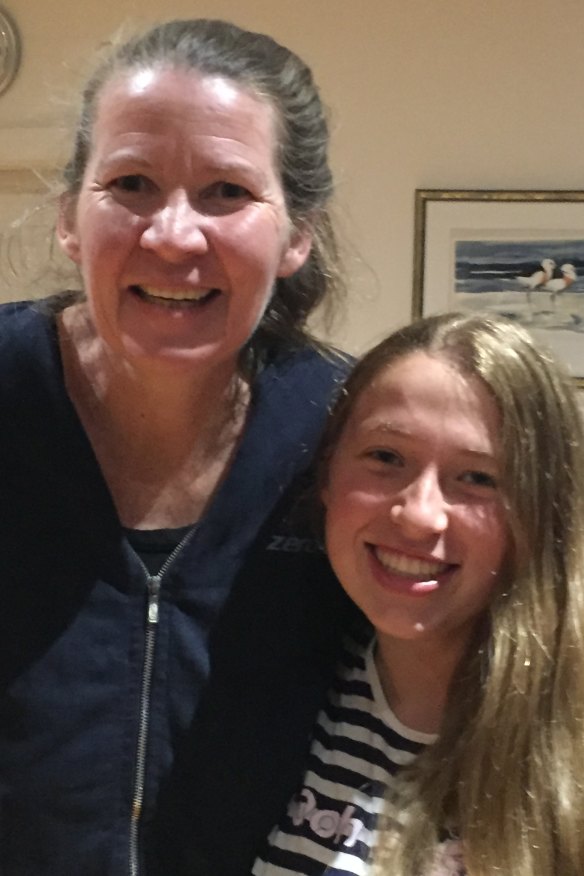
Emma Bates with her niece Nat.
Searle, who used to speak to Emma almost every night, noticed a change in her sister’s behaviour in the last two weeks of her life.
Their phone calls went from an hour a day, to suddenly being spaced out across the week.
Often Searle could hear a man’s voice in the background when she was talking to Emma on the phone. Emma then stopped answering the phone.
Ned Barsons says Emma saved his life earlier this year.
The 65-year-old Cobram man was walking his dog, George, past her house when Emma, who was in the front yard, noticed he was hunched over, his face gaunt and grey.
His legs were buckling beneath him as he struggled to breathe. Barsons did not realise it then, but he was in acute respiratory distress.
“I wasn’t going to go to the hospital, but she dragged me there. She put me in the car, and she drove me,” he says.
“I’m so lucky she did. I walked into the hospital and I couldn’t breathe any more. I just dropped to the ground.”
Barsons, who was friends and neighbours with Emma for more than 12 years, says it was not the first time she had come to his aid.
He had spent Christmases over the years at her house with her family. She was always dropping home-cooked meals, fresh cakes and lemon slices to him and their other neighbours. Barsons would return the favour by mowing her lawn and tending to her garden.
Emma also cooked for an older couple who lived down the road. She affectionately referred to them as ‘Ma and Pa’, often taking them to medical appointments and picking up groceries for them.
“That was Emma,” Barsons says. “She would do anything for you. It is hard to find people like her in life.”
Barsons last saw Emma just days before her death. His first indication that anything untoward had occurred was when he saw police suddenly swarming around her house.
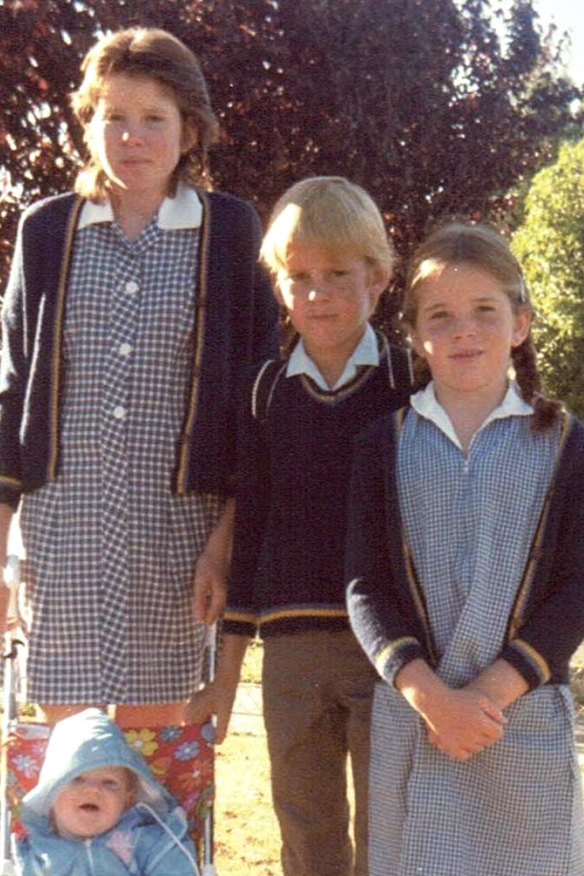
Emma Bates (far left) with her younger siblings on the first day of the school year.
“There were cops everywhere, and I was thinking ‘What the hell is going on here?’” he recalls.
“I couldn’t believe it when I heard she was dead. I lost a friend that day.”
Barsons has felt a lot of anger after Emma’s death. But now, there is a deep sadness, too.
“Emma was a caring and beautiful person. She didn’t deserve to die the way she did,” he says. “All I can hope now is that the truth comes out.”
A rally held in Cobram days after Emma’s body was found was instigated by local woman Ashleigh Ladgrove and her friend, both survivors of family violence.
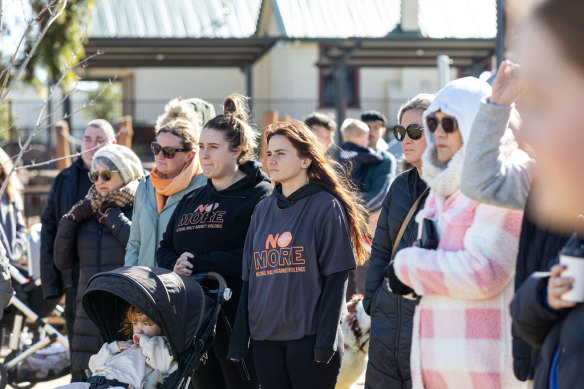
Cobram locals gather for a rally following Emma’s death.
It ran alongside demonstrations across Australia against domestic and sexual violence, organised by advocacy group What Were You Wearing.
“We just felt like we had to do something,” Ladgrove says.
More than 400 people turned up, including members of Emma’s family. Ladgrove shared her own story of abuse, before passing the microphone to the crowd where more than 10 other women shared their own experiences of violence, including one whose partner had tried to kill her.
“It was very emotional,” says Ladgrove. “We had no idea we would get such a response from the community. We were just winging it. But in our small community it has brought many conversations to light.”
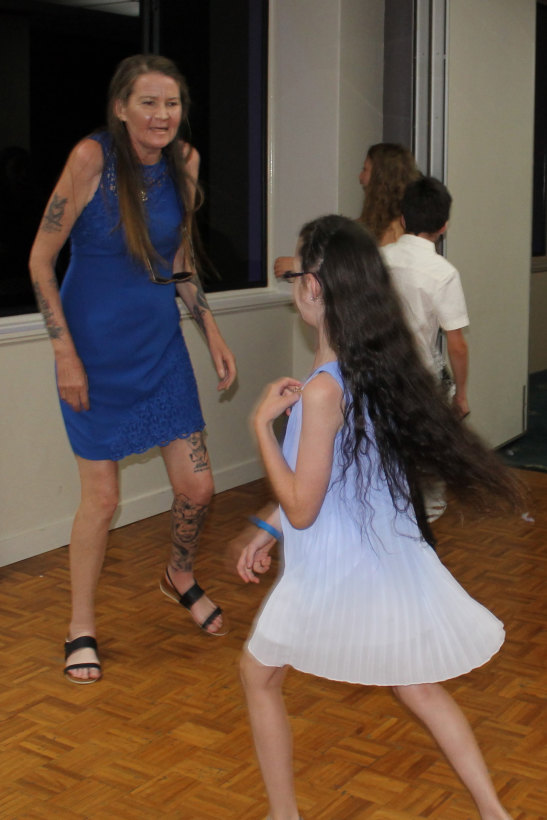
Emma Bates dances with her young niece.
Another rally in Emma’s honour was held late last month. The town’s residents are now pushing for reforms, including a 24-hour police station in Cobram and an increase in funding to support victim-survivors. They also want more men’s behaviour change programs for the town and surrounding areas, and are demanding that the government declare violence against women a national crisis.
There is no official national tally of women’s deaths from domestic violence. Destroy the Joint’s Counting Dead Women project, however, keeps a count of the number of women who die due to violence.
According to its figures, there have been at least 44 such deaths so far this year. An average of one woman a week was killed in domestic violence incidents last year. This year, it has grown to almost one woman killed every four days.
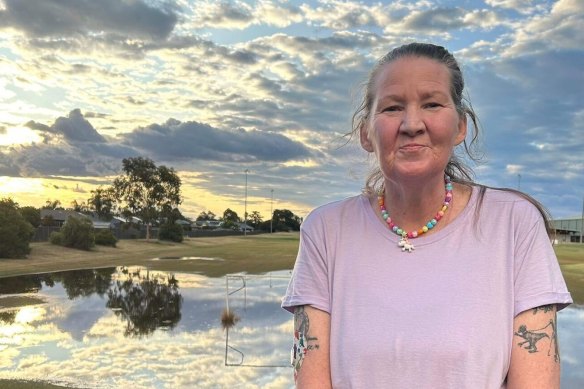
The last photograph of Emma Bates.
The final photo of Emma was taken on Christmas day last year. She had just hosted Christmas lunch and was wearing a rainbow-coloured beaded necklace with a pendant of a unicorn that a niece had made for her.
She is staring out into the horizon down the road from her house, a small smile on her face, the sun and clouds reflected in a flooded soccer field behind her.
Emma’s sisters have printed the photo onto cream-coloured canvas bags they carry into every court hearing. The words scrawled across it say:“Emma matters. Her death is relevant.”
The photo is how Searle likes to remember her little sister: happy and content, with family nearby.
Instead, the sheet that lay over Emma when Searle last saw her hangs like a veil over the violence she is believed to have endured in her final days. A reminder of the many unanswered questions her loved ones have been left with since her death.
“We want justice for Em,” Searle says.
The Morning Edition newsletter is our guide to the day’s most important and interesting stories, analysis and insights. Sign up here.